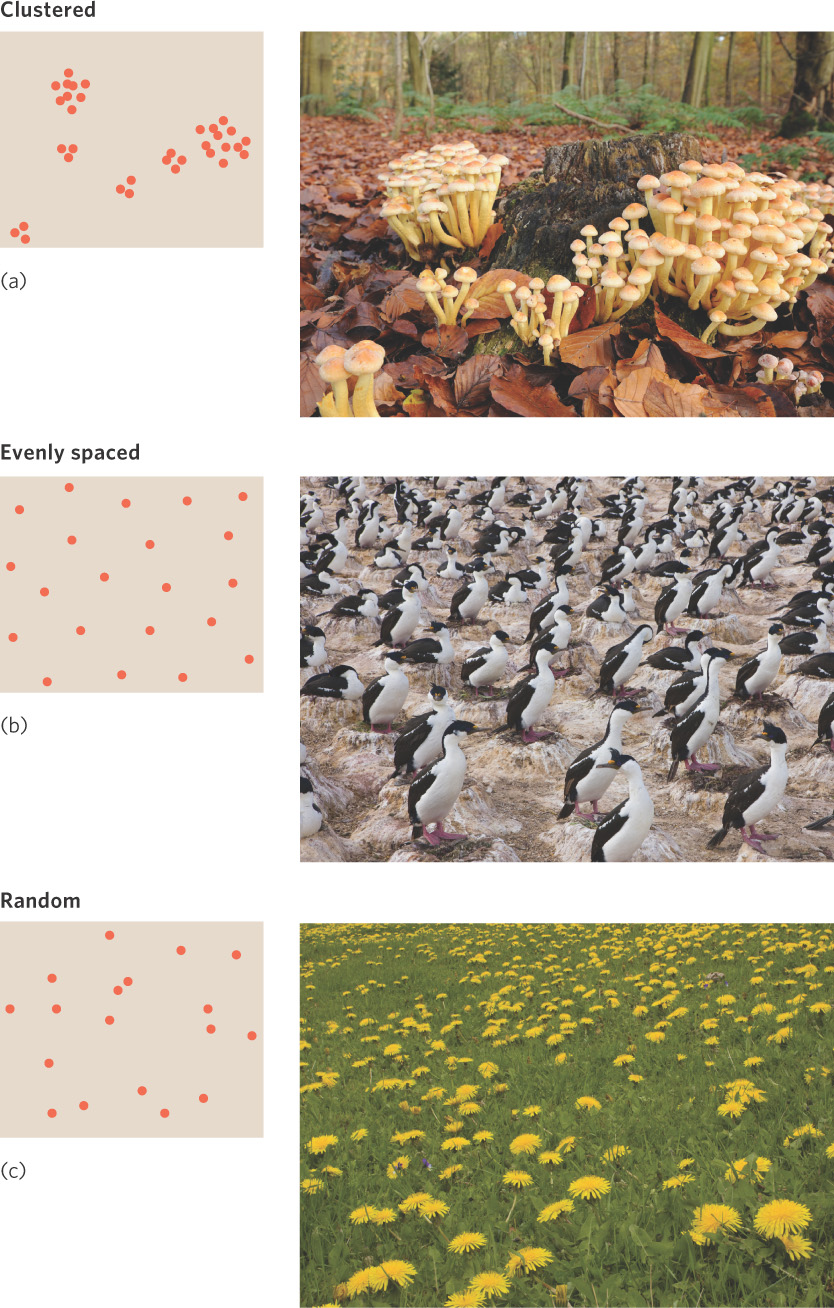
Figure 11.7 Three types of dispersion patterns. (a) Clustered dispersion is characterized by individuals that are aggregated. For example, sulphur tuft fungi (Hypholoma fasciculare) grow in clusters anywhere there is a rotting stump, such as this site in the United Kingdom. (b) Evenly spaced dispersion is characterized by each individual maintaining a minimum distance between neighbors, as is the case for these blue-eyed cormorants (Phalacrocorax atriceps) nesting in Patagonia, Argentina. (c) Random dispersion is characterized by each individual’s position being independent of the location of other individuals, such as these dandelions growing in a pasture in Bulgaria.
Photos by (a) Gary K. Smith/naturepl.com; (b) Juan Carlos Munoz/naturepl.com; (c) FLPA/Bob Gibbons/age fotostock.